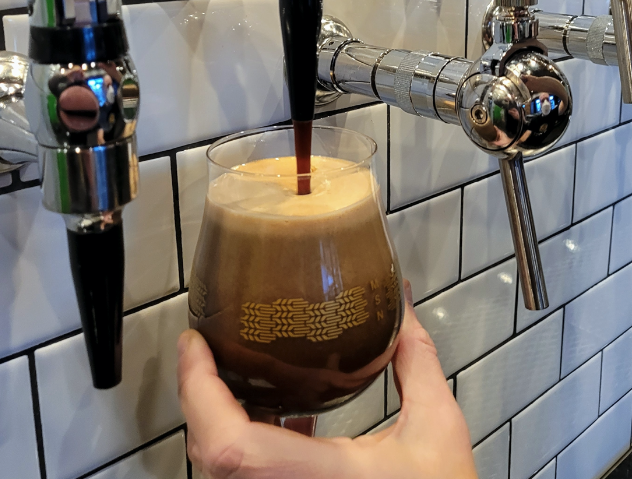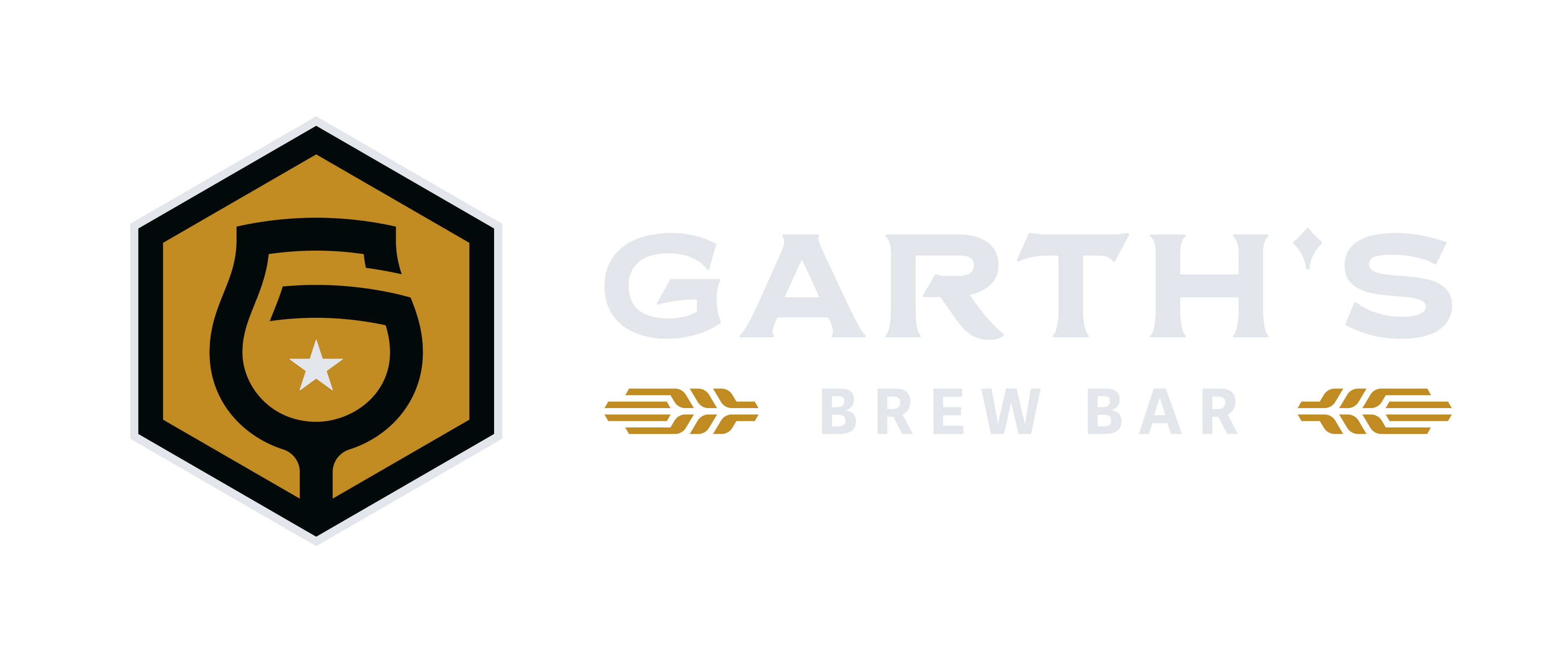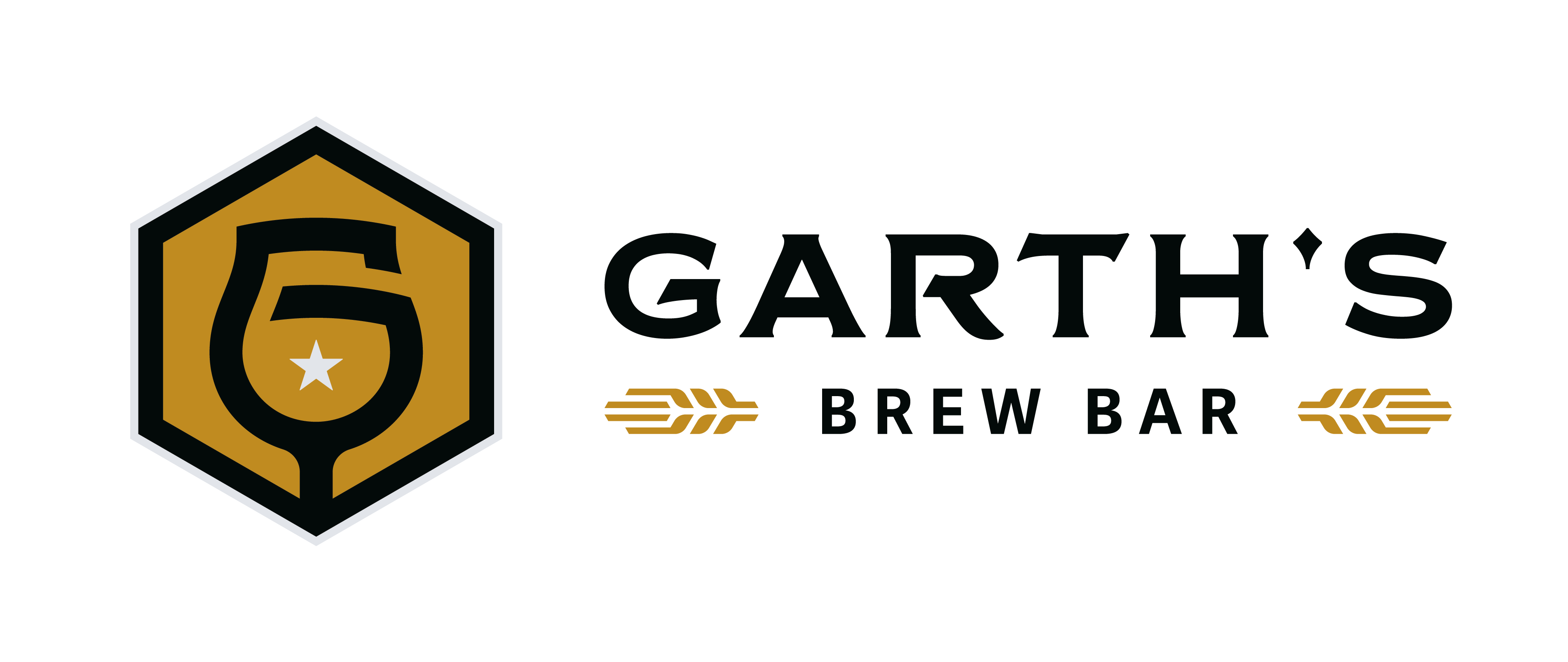Before we can talk about nitrogen, we have to talk about carbon dioxide (CO2).
CO2 is a natural product of the beer brewing process. Brewers also add more CO2 to the final product to create that carbonated mouthfeel experience we come to expect with every beer we consume.
But, CO2 isn’t the only way to get an interesting mouthfeel or flavor from a beer. You can also pressurize beer in sealed kegs or in-line on the way through a draft system to your glass with nitrogen.
First, What Makes CO2 In Beer Unique To Begin With?
Beer is normally carbonated with CO2 which is a colorless, flavorless gas, that gives beer its foam, aromatic head and crisp, bubbly mouthfeel. Some say CO2 in beer is like salt on food – it enhances flavors already present.
While there are old-style ways of increasing the CO2 by adding priming sugar to the beer during the brewing process, most brewers now force carbonate their beer by pumping CO2 into the kegs or fermenters holding the beer before packaging.
Force carbonating allows brewers to manage the amount of CO2 and its impact on flavor and mouthfeel and ensures their keg pressures are at the average rate (2.1-2.5 CO2 volume) that bars have their draught systems set to dispense at.
Fact: Foamy beer is more often a result of warm temperature or imbalanced draft systems than it is a brewer adding too much CO2.
While CO2 has a very strong place in our hearts and on our palates, there’s something to say for the unique flavor and mouthfeel that nitrogenated beer or nitro beer provides.
A Brief History Of Nitro Beer
Nitro-infusions (or nitrogenation) has been a feature of brewing beer long before beer became a scrupulous science.
Traditional English ales were developed before forced carbonation or refrigeration, so to carbonate beer, pubs began using beer engines. Beer engines are hand pumps used to pressurize the beer as it is dispensed.
Because air is 78% nitrogen, this was technically a nitrogenation process. Unfortunately, this hand pump method also introduced an unwanted ingredient into the mix – oxygen. Oxidation in beer lowers its shelf stability and leads to oxidized off-flavors (think wet cardboard) and often times skunked aroma.
When forced carbonation was introduced to brewing, it became an easier method to get a bubbly product with the right flavor and mouthfeel without introducing the beer to oxygen.
It didn’t take long for brewers to revisit adding nitrogen to beer, also sans oxygen.
Cut to brewers of today, bespectacled in clear goggles, painstakingly punching numbers and meticulously monitoring their kettles and kegs to ensure the right amounts of CO2 and Nitrogen go in the respective beers.
Taste And Feel The Difference: CO2 Versus Nitrogen
Why would brewers, taprooms or beer bars like Garth’s Brew Bar serve beer on nitro?
The same reason we use CO2. Nitrogen can enhance beer flavor, mouthfeel, and aroma, in unique ways.
Take, for example, 3 Sheeps (Sheboygan, WI) Cashmere Hammer stout on nitro. You’ll notice a drastically different foamy, creamy head and an all-around smoother, slightly sweeter drink than a similar stout on a regular CO2 draft line.
How about another science lesson? When nitro beer is tapped, its bubbles are much smaller than the CO2 bubbles of a typical beer. If you’ve seen beer poured via nitro, you may have noticed the head doesn’t foam over the lip of the glass.
Fact: Due to its tiny bubbles, we recommend you do not crowler or growler nitro beer because the beer flattens too quickly.
The small nitrogen bubbles dive downward as the beer pushes its way upward. It creates almost an inverse head – one that expands down the glass. It’s a neat spectacle and proof that enjoying beer is fun for all the senses.

Those smaller bubbles form a drink smoother than one carbonated with CO2. CO2 is an acid, which also adds bite to the bubbles in the beer. When the CO2-infused beer hits your tongue, it releases acid, tickling your tastebuds.
Even without the big bursting bubbles of CO2, nitrogen still brings out the sweetness in beer, which is why you typically see it in darker, maltier or sour styles. The nitrogen accentuates the malty, caramel flavors of a stout or porter and the tropical sweetness of a fruited sour.
Fact: Traditional beers are infused with 70% CO2 and 30% nitrogen while Nitro beers are infused with 75% nitrogen and 25% CO2. Bars use gas blenders to get the perfect blend for your experience.
While most breweries create nitro versions of their dark or sour beers, you can find breweries in Madison experimenting with other styles such as Working Draft Beer Company’s “The Usual,” a blonde ale with vanilla and coffee on nitro. Like with stouts, it adds a layer of creaminess and accentuates the beer’s smooth vanilla flavor.
If you’re interested in getting notified when new beer gets tapped at Garth’s Brew Bar, then subscribe to the Garth’s Brew Bar our Untappd menu. Then you’ll be the first to know when we tap nitro beers like a sour from Sahale Brewery in Grafton, Wisconsin, for example.
With our nitro tap now in position, you can expect more silky-smooth beers to join our craft beer tap lineup! Let us know which nitro beers you’d like to see on tap in the comments below.

